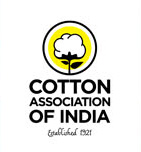COCPC recommends freezing the duty for next six months, if it is not scrapped
By Subramani Ra Mancombu
April 16, 2025
The Committee on Cotton Production and Consumption (COCPC), headed by the Union Textile Commissioner, has recommended to the Centre to remove the 11 per cent import duty on cotton.
The Committee on Cotton Production and Consumption (COCPC), headed by the Union Textile Commissioner, has recommended to the Centre to remove the 11 per cent import duty on cotton.
The COCPC, which comprises all stakeholders in the cotton industry, made the recommendation at its meeting held in Mumbai on Wednesday, said K Venkatachalam, Chief Advisor, Tamilnadu Spinning Mills Association (TASMA). He was part of the stakeholders meeting. “If the Centre is unable to remove the 11 per cent duty fully, then the COCPC recommended that it could freeze the customs duty for the next months,” he told businessline.
Textile mills importing cotton have to be alert on the developing scenario, though any change in the import duty structure will have to be notified by the Ministry of Finance, he said.
Positive signal to US
Venkatachalam said the move will send a positive signal to the Trump administration in the US that India has made the import duty on cotton zero. “This will likely reflect positive on Indian textile exports to the US,” he said.
This development follows the estimate of Indian cotton production at lower than 300 lakh bales (170 kg) by COCPC and industry bodies such as the Cotton Association of India (CAI). According to the CAI’s latest estimate, cotton output this season, to September, will likely be 291.30 lakh bales. The association has also projected imports to more than double to 33 lakh bales from 15.20 lakh bales last season. The cotton supply this year, including 25 lakh bales imported as of March 31, is estimated at 306.83 lakh bales, compared to the estimated consumption of 315 lakh bales.
The Indian textile sector has begun importing cotton over the past few years, as the natural fibre’s production has stagnated due to its lower yield. India’s cotton production increased to nearly 400 lakh bales in the early 2010s after the introduction of genetically-modified Bt cotton.
But, no new Bt variety has been introduced since 2006, and pest attacks such as pink bollworm and white fly, besides climate change, have begun to impact the productivity.
(Source: https://www.thehindubusinessline.com)
